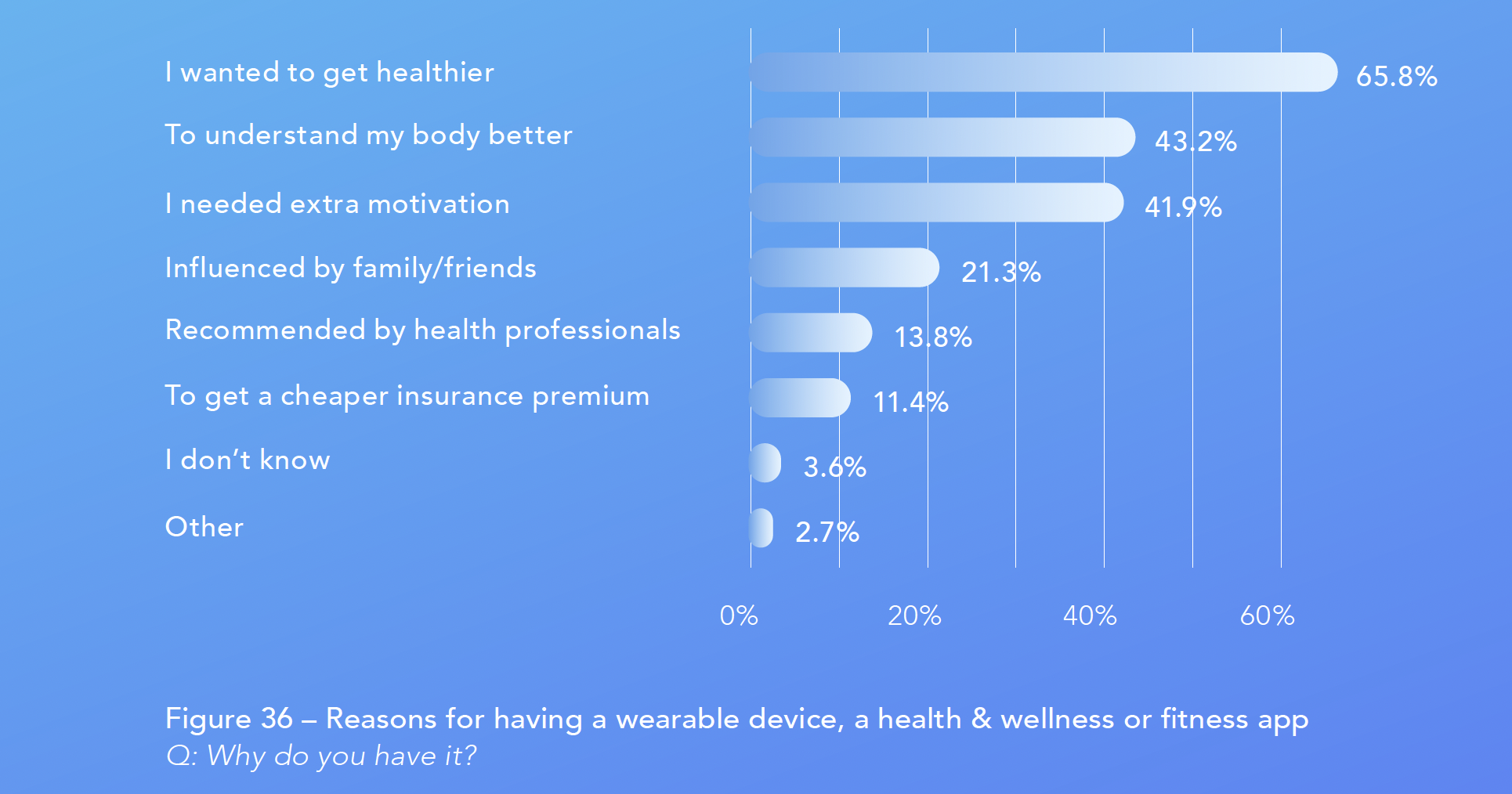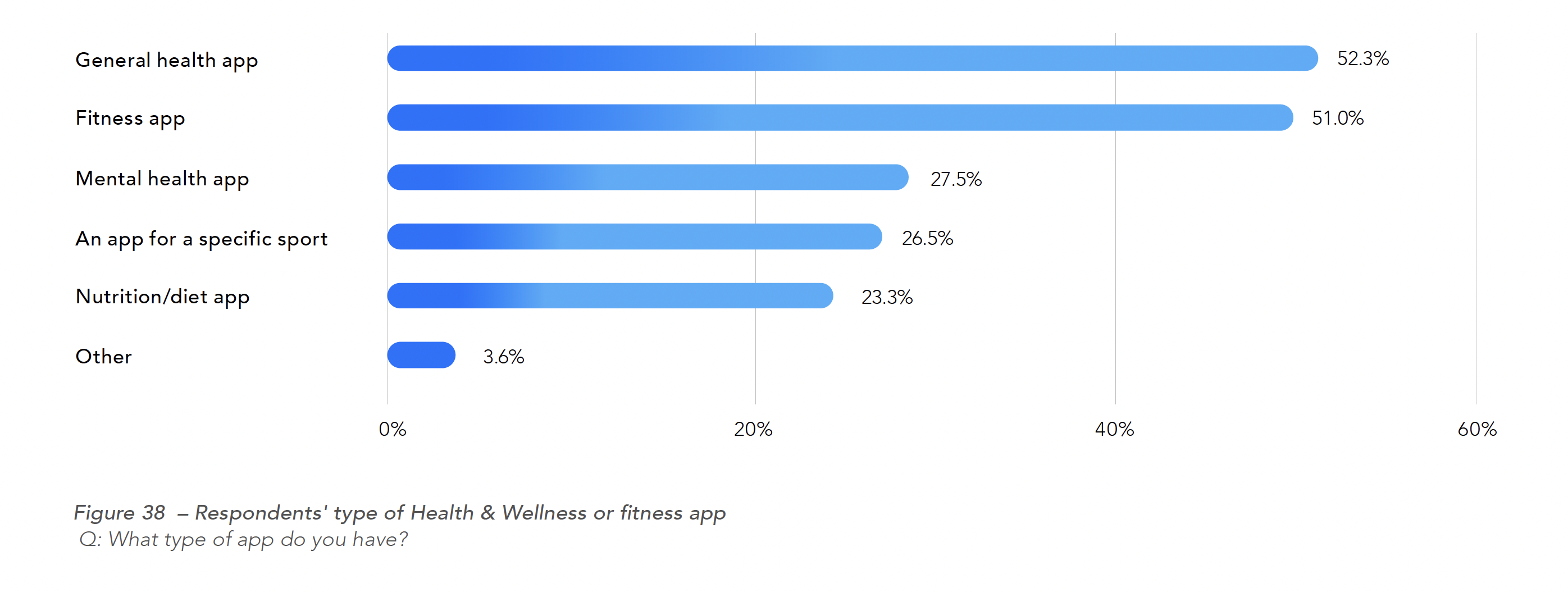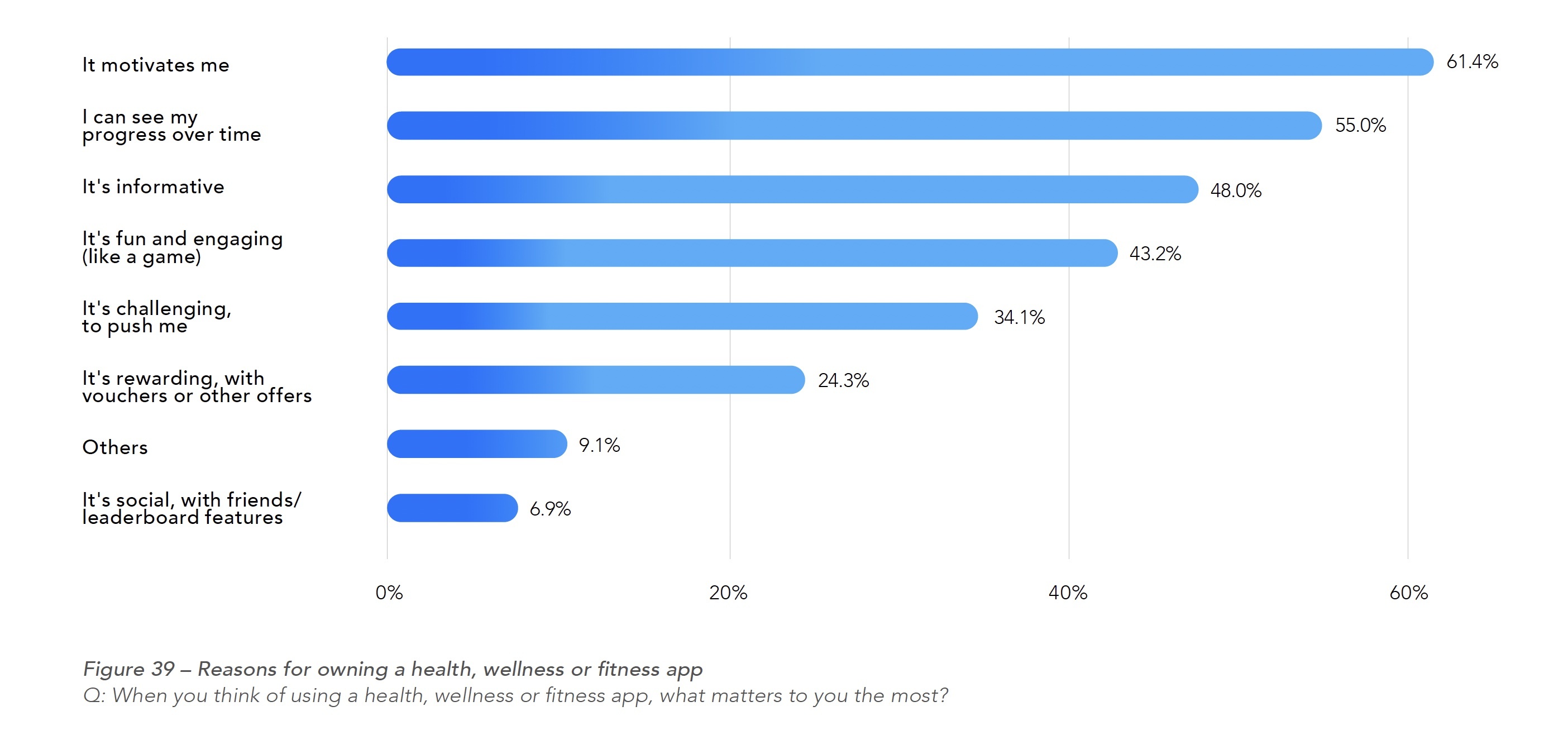Health apps: the best way to motivate and engage with consumers

Consumer appetite for health apps and wearables shows little sign of waning. Whilst gyms and leisure facilities were out of bounds during lockdowns, demand for health technology rocketed. A report published by the World Economic Forum[1], using data from MoEngage, found that between Q1 and Q2 2020, health and fitness app downloads increased by 46% worldwide. India saw the highest increase at 156%, equivalent to 58 million new users.
-
61.4% believe health & wellness/fitness apps motivate them
Appetite for apps
This growing popularity of health and fitness apps is consistent with the evidence from our research. More than a third (34.7%) of respondents use a health, wellness or fitness app regularly. A further 26.5% expressed interest in getting one. As one might expect, the use of apps is very much age related. Around 44.0% of Gen Z and Millennials claim to be regular users compared with just 12.0% of the Silent Generation.
Wearables are also popular among respondents. 30.1% use them regularly with a further 26.8% interested in getting one. Wearables are often used to feed data into an associated app, so it is probable that use of apps and ownership of wearables are highly correlated.
When it comes to respondents’ reasons for using an app or a wearable, one stands out above all others – the desire to get healthier. In fact, when we asked respondents what would encourage them to improve their physical health, the use of a health and wellness app came second only to a regular medical check-up. But, whilst there is little doubt that an impending medical check is a powerful incentive to moderate one’s habits, it is questionable how effective this is in bringing about permanent change (Figure 36).

Is there evidence that apps are effective?
There is clear evidence those who own and regularly use health and fitness apps are significantly more active than others (Figure 37). It is difficult to distinguish with absolute certainty whether owners exercise more because they have an app or whether it is that those who exercise frequently are more motivated to download an app, but there is every indication that they are effective in keeping users engaged.
| Yes | No, but I'm interested | No, but I used to | No, I'm not interested | |
| 3 or more times a week | 68.3% | 52.9% | 46% | 42.4% |
| Once or twice a week | 21.9% | 25.3% | 22.5% | 21.2% |
| Rarely | 8.2% | 18.2% | 23.9% | 23% |
| Never | 1.6% | 3.6% | 7.6% | 13.4% |
Figure 37 – Breakdown of physically active respondents according to their Health & Wellness app ownership and use / Q: Do you use a wearable device (e.g. a Fitbit, Garmin, or Apple Watch) regularly? (e.g. 2-3 times per week) X How often do you exercise for more than 20 minutes?
Figure 38 explores the type of app used by respondents. Most common are general health apps (52.3%) and fitness apps (51.0%).

It is good news for insurers that consumers – particularly consumers at the key target ages – recognise the value of health technology. An app or wearable can motivate customers to improve their health, potentially reducing the risk of long-term conditions such as heart disease, type 2 diabetes and some cancers.
Consumers’ appetite for apps also provides a platform for insurers to interact with their customers. There is an opportunity to shift the relationship from one that is purely transactional to one that is more engaged and personal by using this technology to support them in making lifestyle improvements. In addition, the wealth of health data shared through an app offers potential for developing new and more personalised forms of insurance.
The anatomy of an appealing app
If insurers are to maximise the potential of these opportunities, it is essential that the design of the app incorporates features that are appealing to the customer. Our survey sought insights into the features of a health, wellness and fitness app that are most important to them (Figure 39).
Motivation and the ability to monitor progress are clearly key requirements. Whilst social and leader board features can contribute to motivation, these were seen to be of lower priority.

Motivation and the ability to monitor progress are clearly key requirements. Whilst social and leader board features can contribute to motivation, these were seen to be of lower priority.
One third of respondents said that they would be willing to pay a premium subscription provided that its design justifies the fee. That increases to over 50.0% of respondents who are already regular users of a health and wellness app and have experienced the benefits that they can bring.
Reference
[1] Fitness app downloads grew by 46% worldwide in COVID-19 | World Economic Forum (weforum.org)